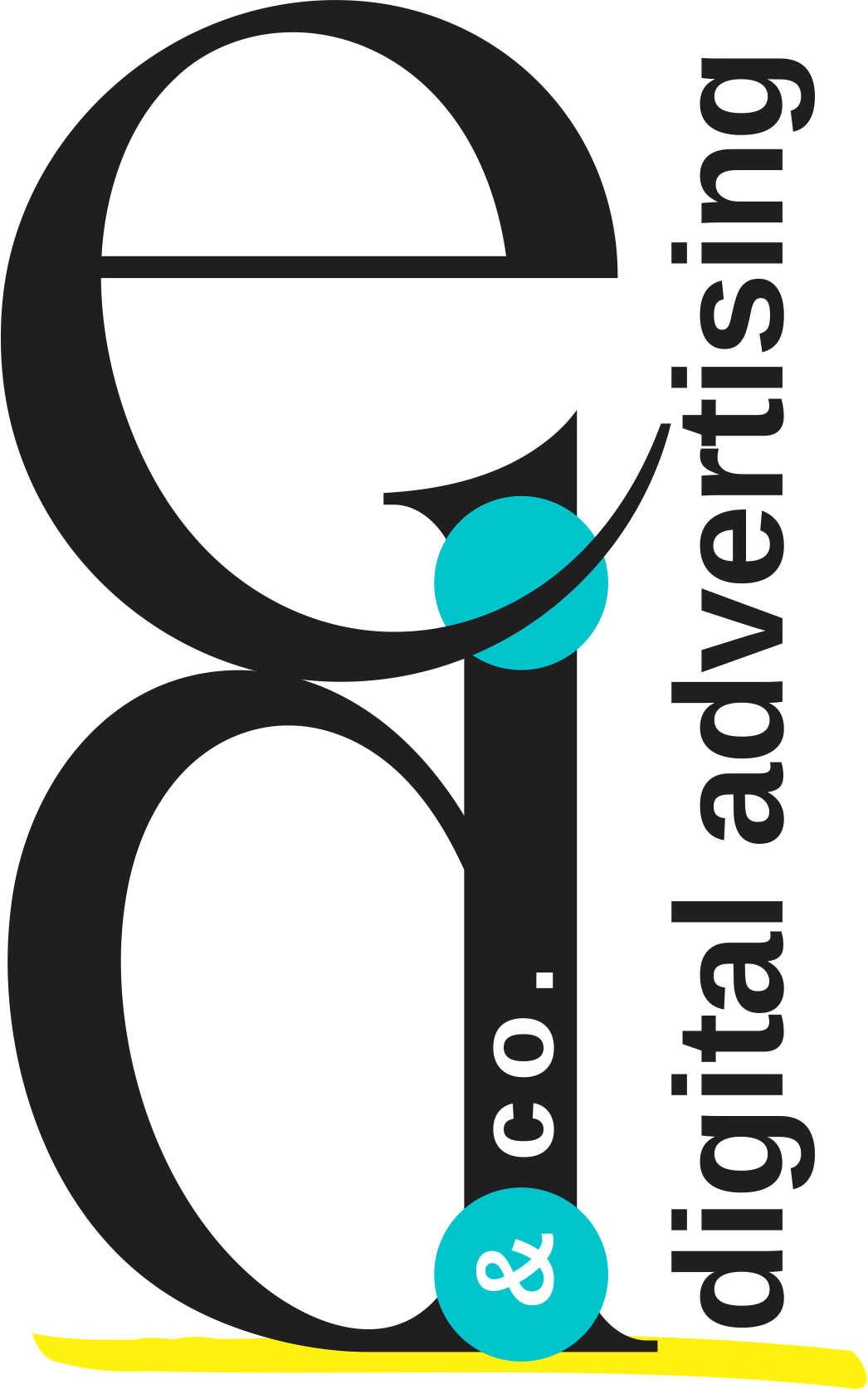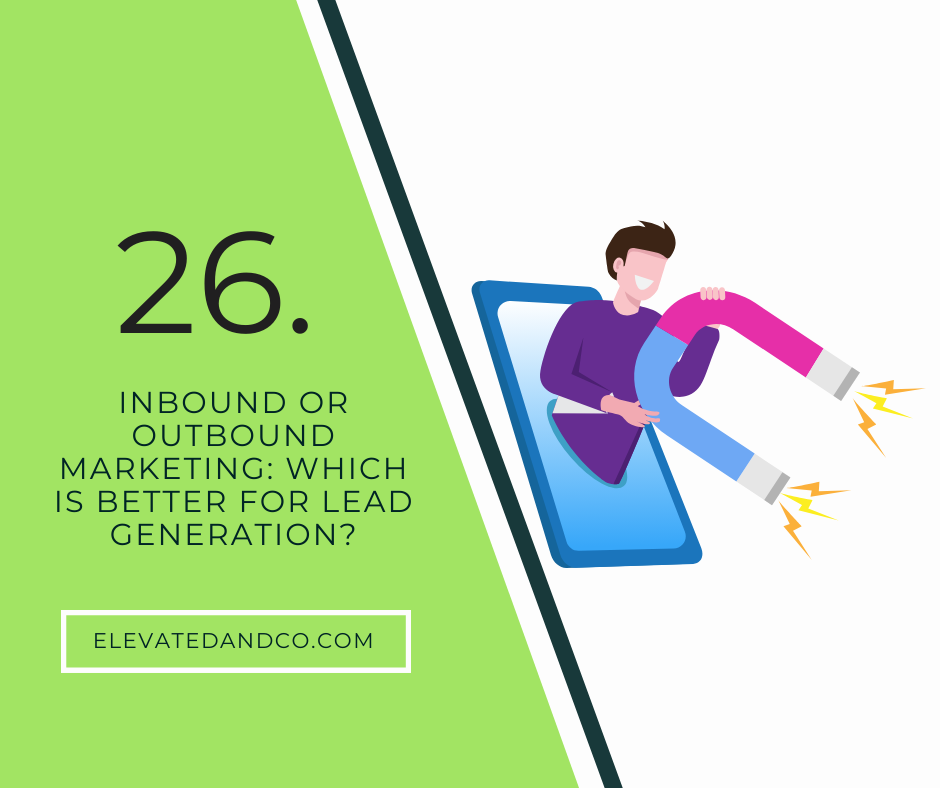The quest for effective lead generation strategies is relentless for business owners who want to grow their business. Every enterprise, whether a fledgling startup or a well-established conglomerate, grapples with consistently attracting potential customers. Why? Because leads are the lifeblood of any business. The ultimate goal for most, if not all, is to decipher the puzzle of how to get more leads.
Consistently getting more leads ensures a steady influx of potential customers and paves the way for sustained business growth and profitability.
However, when navigating through and thoroughly understanding lead generation, one quickly realizes that it’s not a one-size-fits-all game. Two primary schools of thought have emerged as dominant forces: Inbound and Outbound Marketing. Each boasts its unique methodologies, advantages, and challenges.
But in the face-off between these two titans, which approach emerges as the champion for businesses aiming to bolster their lead generation efforts? Is one universally superior, or does the answer lie in a more nuanced understanding of their respective strengths? Let’s dive deeper to unravel this conundrum.
What is Lead Generation?
Before diving into the contrasting strategies of Inbound and Outbound Marketing, it’s pivotal to grasp the intricacies of lead generation. Lead generation is the art and science of attracting potential customers, often called “leads,” who have shown interest in your products or services. But it’s more than just a numbers game; it’s about quality and intent.
Lead generation is the initial step in a broader sales pipeline or funnel process. This pipeline represents a potential customer’s journey, from the moment they become aware of your brand to the point they purchase. The funnel typically consists of stages like awareness, consideration, decision, and conversion. By generating leads, businesses are filling the top of this funnel. The more qualified these leads are, the smoother their transition through the subsequent stages, culminating in a sale.
The purpose of lead generation, therefore, isn’t just about quantity but ushering the right leads into this pipeline. It’s about identifying individuals or entities interested in what you offer and having a genuine potential to become paying customers. This distinction is crucial because not all leads are created equal. Some might browse, while others actively seek solutions and are ready to buy.
Given lead generation’s pivotal role in sales, it’s no wonder businesses invest significant resources into it. The overarching goal is clear: how to grow the business by not just increasing the number of leads but ensuring these leads are of high quality, thereby maximizing the chances of sales and, by extension, revenue.
Inbound Marketing: The Pull Strategy
Inbound marketing is a modern approach to attracting customers by offering them value at every touchpoint. Instead of bombarding them with unsolicited promotions, the essence of inbound marketing lies in creating content that resonates with your target audience’s needs and interests. The idea is simple yet powerful: potential customers naturally gravitate toward your brand if you provide consistent value.
Key Features to Inbound Marketing
- Content Creation: At the heart of inbound marketing is content. But not just any content; it’s about crafting pieces that address your audience’s specific pain points, interests, and aspirations. The content should be insightful, relevant, and actionable, whether a blog post, video, podcast, or infographic. You position your brand as a trusted resource by answering your audience’s burning questions.
- SEO (Search Engine Optimization): SEO is the backbone of inbound marketing. It ensures that the valuable content you create is discoverable by your target audience when they search online. By optimizing your content for search engines, you increase its visibility, making it easier for potential customers to find you organically. For businesses pondering how to increase leads, SEO offers a sustainable solution.
- Social Media Engagement: Social media isn’t just about broadcasting; it’s about engagement. Platforms like Facebook, Twitter, LinkedIn, and Instagram allow brands to have two-way conversations with their audience. It’s an opportunity to share content, gather feedback, address concerns, and build a community around your brand.
- Lead Magnets: These are strategic offerings designed to capture the interest of potential customers. Whether it’s a free e-book, webinar, course, or discount coupon, lead magnets provide value in exchange for something invaluable: the contact details of a potential lead. It’s a win-win: the customer gets something of value, and the business gets a chance to nurture that lead further down the sales funnel.
Pros of Inbound Marketing
- Builds Long-term Trust and Credibility: Inbound marketing isn’t about quick wins and building relationships. By consistently offering value, brands can establish themselves as industry authorities, earning the trust and loyalty of their audience.
- Attracts Highly Targeted Leads: Since the content is tailored to the specific needs and interests of the target audience, the leads generated through inbound marketing are often more qualified and have a higher likelihood of converting.
- Cost-effective Over Time: While inbound marketing requires an upfront investment in content creation and optimization, its long-term benefits often outweigh the costs. Organic traffic, once established, can provide a steady stream of leads without the recurring costs associated with paid advertising.
Cons of Inbound Marketing
- Requires Patience and Consistent Effort: Inbound marketing is a marathon, not a sprint. Building authority, ranking on search engines, and seeing tangible results takes time.
- Results May Take Time: Unlike paid advertising, which can offer immediate visibility, inbound strategies, especially SEO, can take months or even years to yield significant results. However, the results are often sustainable and long-lasting once the momentum is built.
Outbound Marketing: The Push Strategy
Outbound marketing, often called the “push strategy,” is a more traditional form of marketing where businesses initiate the conversation by sending their message to an audience. This approach is more direct, capturing attention in a noisy world. While it might not always cater to the specific interests of every individual in its audience, its strength lies in its broad reach and immediacy.
Key Features to Outbound Marketing
- Cold Calling: Often considered the quintessential outbound strategy, cold calling involves reaching out directly to potential customers via phone. It’s proactive and immediate, allowing businesses to pitch their offerings directly to a lead. While it can be challenging, the right script and approach can yield significant results.
- Direct Mail: Direct mail might seem archaic. However, physical promotional materials, whether brochures, postcards, or catalogs, can still capture attention. The tactile experience of holding a biological promotional material can leave a lasting impression.
- Trade Shows: These events allow businesses to showcase their products or services in person. It’s an opportunity to engage with potential customers face-to-face, answer questions, give live demonstrations, and build immediate rapport.
- Paid Advertising: From billboards to online ads, paid advertising offers quick visibility. Platforms like Google Ads or Facebook Ads allow businesses to target specific demographics, ensuring their message reaches the right audience.
Pros to Outbound Marketing
- Immediate Results: One of the primary advantages of outbound marketing is the immediacy of results. Whether it’s a cold call that leads to a sale or a paid ad that drives traffic, businesses can see quick returns on their investment.
- Broad Audience Reach: Outbound strategies, especially mass media advertising, can reach a vast audience, increasing brand awareness and visibility.
Cons to Outbound Marketing
- Can Be Costly: Outbound marketing can be expensive, especially strategies like paid advertising or hosting a booth at a major trade show. It requires a significant upfront investment, and there’s no guarantee of returns.
- Might Be Perceived as Intrusive: In an age where consumers value personalization and relevance, outbound tactics can sometimes appear generic or unsolicited. This perception can lead to resistance or even negative brand associations.
- With its direct and broad-reaching approach, outbound marketing offers businesses the chance to capture attention quickly. While it might come with higher costs and potential resistance from consumers accustomed to personalized content, it can drive immediate results and significantly boost brand visibility when executed correctly.
So, Which is Better?
The debate between inbound and outbound marketing often presents a dichotomy, but the reality is far more nuanced. Both strategies have unique strengths and challenges; understanding them can help businesses make informed decisions.
Inbound Marketing: The Organic Approach
Inbound marketing thrives on authenticity and value. It’s about nurturing relationships over time, gradually building trust and credibility. This approach can be particularly beneficial for startups or businesses in their infancy. Why? Because it allows them to:
- Establish a Brand Voice: Through consistent content creation, businesses can carve out a unique identity and voice in the market.
- Build a Loyal Following: Companies can foster loyalty by offering value without immediate expectations. Over time, this loyal audience can become brand ambassadors, promoting the business through word of mouth.
- Lay a Sustainable Foundation: While inbound might take time to yield results, it can provide a steady stream of organic leads once established. This sustainability can be cost-effective in the long run, reducing the dependency on paid strategies.
Outbound Marketing: The Direct Approach
Outbound marketing is assertive and immediate. For established businesses with a clear understanding of their target audience and a more substantial budget, outbound can offer:
- Rapid Market Penetration: Through strategies like paid advertising or trade shows, businesses can quickly capture market attention, making it ideal for product launches or entering new markets.
- Brand Visibility: Outbound tactics, especially mass media campaigns, can significantly boost brand awareness, ensuring that the business remains top-of-mind for potential customers.
- Immediate Feedback: Direct outreach methods, like cold calling, provide businesses with immediate feedback. This feedback can be invaluable for tweaking offerings or strategies.
Striking the Right Balance
The optimal marketing strategy isn’t about choosing between in and outbound but finding the right balance. Factors like business goals, industry dynamics, target audience, and budget play a crucial role in this decision.
For instance, a tech startup introducing a novel product might rely heavily on inbound strategies to educate the market and build credibility. In contrast, a well-established fashion brand launching a new line might leverage outbound tactics for immediate visibility.
In essence, the key lies in understanding the unique needs and circumstances of the business. By blending the organic allure of inbound with the direct impact of outbound, companies can craft a holistic strategy that drives growth, builds brand equity, and fosters lasting customer relationships.
Final Thoughts
Lead generation stands as a pivotal move. Whether you’re a budding startup charting unfamiliar territories or a stalwart brand aiming to fortify its market stronghold, comprehending the subtleties of lead generation is indispensable. Choosing between inbound and outbound marketing isn’t a matter of superiority but of alignment with your unique business objectives and the audience you aim to captivate. By meticulously assessing the advantages and challenges of both strategies, businesses can sculpt a lead generation blueprint that aligns with their aspirations and resonates deeply with their audience. In this ever-evolving marketplace, it’s not just about reaching the audience; it’s about getting the right audience in the right way. In this endeavor, a balanced understanding of inbound and outbound marketing is the compass for sustained growth and success.

